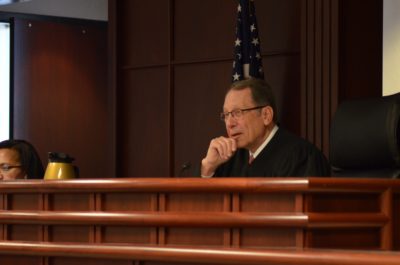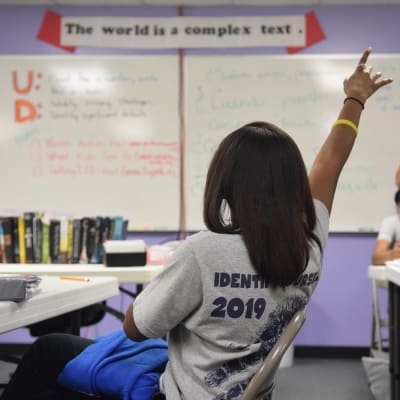

How is it even possible to describe the current situation in North Carolina’s public schools and propose remedies for the problems identified without considering the racial resegregation of the schools? It is a well-documented resegregation. It follows a brief period of desegregation that itself followed two centuries of legally segregated schools.
In 2018, Judge David Lee of the Wake County Superior Court (i.e., the court overseeing the case known as Leandro) ordered that an independent agency be engaged to report to the Court on the status of the State’s compliance in assuring that all children have access to the Constitutionally required sound basic education. That report was prepared by consultant WestEd and submitted to the Court in October 2019, then to the public in December 2019. While thorough in many respects, the issues of race and segregation in public schools are largely missing from the report.
The paper that you are about to read is a commentary on the text of WestEd’s Leandro report: Sound Basic Education for All (WestEd et al., 2019). The format for this commentary is unusual. I will suggest that WestEd’s report is missing entire chapters; chapters that would have been included had the issues of race and segregation been a focus of the various Leandro court orders. So, what follows is an effort to suggest answers to the question of what was missing, to suggest how WestEd’s report might have read had it focused on race, and what action plans might have resulted from viewing the State’s public schools through the lens of segregation.
I offer these pages with respect. They are not intended as a critique of the WestEd research, which was thoughtfully designed, nor its report which was extensively researched, and clearly presented. I believe the many contributors to that report were motivated by (1) a sincere and well-informed desire to improve North Carolina’s schools, and (2) the Court’s rulings which focused on inequitable distribution of state resources in support of public schools. Racial segregation was not the subject of the original lawsuit nor did it figure prominently in any of the Court’s decisions. The charge given to WestEd by the Court did not explicitly name race as one of the focal topics of the inquiry, so it is not surprising that consideration of race is minimal.
The Missing Pages: Presented in four parts
Part One will lay a foundation for consideration of race as a critical factor in understanding and repairing North Carolina’s current situation with respect to sound basic education, the uneven distribution of access to that education, and the consequences of racially segregated schools. The foundation can be viewed through the lenses of history and public policy. I am grateful to Ann McColl for the careful documentation she has assembled in this regard, and upon which I have drawn.
Part Two will shift the focus from the past to the present. In recent years we have been able to read a number of objective accounts based on the extensive demography and statistical analyses of several teams of North Carolina scholars including Charles Clotfelter, Helen Ladd, and the team of Nicholas Triplett and James Ford. Appreciation is offered to these and other investigators too numerous to mention here.
Part Three recounts the efforts here and across America that have been made to end segregation. It is a story of optimism followed by inevitable disappointment. The Supreme Court victory in 1954 was an occasion that launched two decades of hopeful efforts demonstrating slow but steady progress, only to be undone when the Federal courts ceased to issue desegregation orders and the executive branch was no longer empowered by Congress, the Courts and the President to aggressively enforce Brown and its progeny. Nevertheless, some progress was made, and lessons were learned, so a revitalized attempt to end segregation will not have to start with a blank slate. Part Three will summarize the factors that contributed to success and will set the stage for attempts in the future to accomplish what has so far been so difficult to sustain.
Part Four will propose a way forward guided by foundational principles reasonably calculated to assure establishment of a statewide system of public schools as that system might have looked had Black educators, policy makers, and parents been included and engaged from the outset. This part will also make the case for a higher standard than the one the Leandro court found in the Constitution. Rather than sound basic education, a target that assures the attainment of nothing beyond mediocrity, I will argue for the highest possible standard of excellence in public education, a standard that every caring parent would choose for their own child, and one that civic-minded parents would choose for everybody’s children. Part Four concludes with a summary of lessons learned from previous efforts to achieve integrated public schools.
The State of North Carolina had a number of chances to design its system of public education with everybody’s children in mind, but at every opportunity the State’s leaders failed to take the bold steps necessary. At least for fifteen years following Brown the majority of the State’s voters only demanded boldness in opposition to integration. The State has paid dearly for these failures as significant segments of each generation of children have grown older but not necessarily wiser. The Leandro case and the WestEd report are steps in the right direction. But even if the Court eventually releases the State from any remedial obligations engendered by Leandro, and even if the WestEd report were to be fully implemented, the children of North Carolina are likely to be once again short-changed by the adults who have the political power, and who should be acting more aggressively on behalf of those who lack it.
Before concluding this Preface, mostly written prior to the arrival of the coronavirus and the global pandemic and seismic upheaval it has caused, it is necessary to explain why a paper on racial desegregation is being offered now. A number of commentators have already addressed the inequities in public education exposed by the closure of schools and the transition to remote schooling, so they will not be repeated here. What may not be self-evident, however, is the wisdom of returning Leandro to the forefront of the educational policy conversation and merging it with the State’s plans to rebuild public education in the aftermath of the pandemic.
If not for the COVID-19 pandemic, North Carolina’s educators and policy-makers would be devoting much of their attention to Leandro and the consent agreement that requires the State to assure a Leandro-compliant education to every student. The public health and economic disasters occasioned by the virus have added enormous complications to that already foreboding challenge. If and when the State succeeds in meeting the Leandro vision, it will still have to face the reality of racial inequity and segregation, so what better time to take that on, too? If public schools are to emerge from the crisis stronger than before they will have to be stronger for everybody’s children. In the coming times of scarce financial resources, wise investment of state funds must include a direct and forceful assault on the opportunity gap. The subsequent parts of this paper will make the case that only by finally confronting North Carolina’s shameful history, substituting racial equity for racial discrimination, can the State comply with the Leandro rulings, recover from the pandemic, and attain its place as a national leader in education, a place it once it held, and can hold again.
The Leandro Courts have found in the North Carolina constitution a right to a sound basic education. The constitution that set such a low bar is now over a century old, and while not entirely obsolete, it is nevertheless in need of an update. The outlines of that update are to be found in the Court’s definition of sound basic education, which is a legal standard, not an educational vision. Judge Manning in the first Leandro ruling (1997) could not have said it more clearly: the definition we have given of a “sound basic education” is that which we conclude is the minimum constitutionally permissible.
Why not aim higher? Why not establish the right of everybody’s children to the best possible public education that a state can provide? Why allow the State’s legal apparatus, and not its educators to take North Carolina to a position of leadership in providing all its children with an excellent education?
In Good to Great, professor of business Jim Collins (2001) made a compelling case for how companies that had decided to achieve greatness were able to attain it by making certain empirically determined decisions. This Preface will give Jim Collins the last word.
When asked why anyone should bother to strive for great when good was, well, good enough, Collins replied:
I believe that it is no harder to build something great than to build something good … It does not require more suffering than perpetuating mediocrity … There is great solace in the simple clarity of what is vital and what is not … Simple. Clean. Straightforward. Elegant. And a heckuva lot of fun. If it’s no harder, the results better, and the process so much more fun, why wouldn’t you try for greatness?
Those who strive to turn good into great find the process no more painful or exhausting than those who settle for just letting things wallow along in mind-numbing mediocrity.
If you’re doing something that you care so much about and you believe deeply in its purpose, then it’s impossible to imagine not trying to make it great. If you’re engaged in work that you love and care about for whatever reason, then the question needs no answer. The question is not why, but how. If you have to ask the question ‘why should we try to make it great? Isn’t success enough?’ then you might be engaged in the wrong line of work.
Read the full manuscript below.



